Currently Browsing
Author Archive
How to Teach Kids to Be Kind
- 5 June //
- Posted in For Parents, Teaching Resources //
- Tags : activities for children, character education
- Comments Off on How to Teach Kids to Be Kind
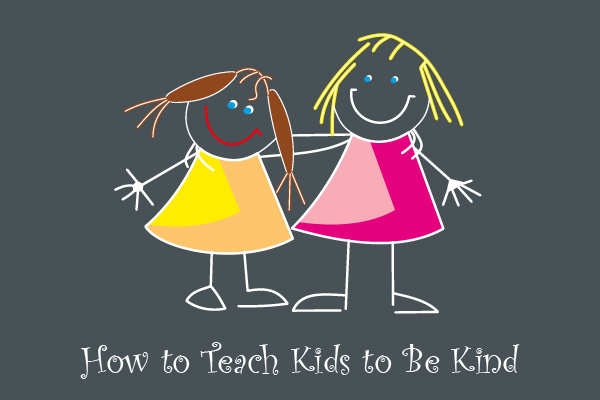
Every day, stories about bad guys fill the news, but it’s the stories of kindness that really stand out. Whether it’s a fast food employee helping a customer or a group of students checking on a Grandma in the Window, these stories show the importance of being kind. Unfortunately, especially when people are stressed or tensions are high, showing kindness isn’t the norm. Harvard’s Making Caring Common project found that 80 percent of middle and high school students thought achievement and happiness were more important than caring for others. Teachers and parents can help turn those numbers around by teaching kids to be kind. Kindness might not solve all of the world’s problems, but it’s a good place to start.
Modeling Kindness
The first step in teaching kids to be kind is to model kindness. That means it’s time to end the “Mommy Wars”, set aside the political differences, stop pointing out what everyone else is doing wrong, and start focusing on what they’re doing right. You can model kindness by:
- Saying please and thank you
- Regularly telling others what you appreciate about them
- Speaking to others in a pleasant tone, even if they upset you
- Treating others, including children, with respect
- Pitching in when you see a need (without complaining)
- Giving random compliments to others
- Keeping your negative thoughts to yourself
- Doing unto others as you would have them do unto you
Kids tend to model the behaviors of the adults around them. If they see you regularly being kind, they will begin to exhibit kindness in their own lives. Of course, no one’s perfect. There will be moments when you tell someone off, hurt someone’s feelings, or fail to help someone in need. Taking the time to apologize when you were less than kind can also help kids learn a lesson about the importance of kindness.
Offering Positive Praise
Just like adults, kids need validation. They want to know that they’re appreciated and that they’re doing the right things. According to Greater Good in Action, kids actually have a propensity towards being kind. Parents and teachers can encourage kids to act on that propensity. Instead of focusing on what kids are always doing wrong, take some time to focus on what they’re doing right, particularly when it comes to kindness. Say things like:
- “You are a very helpful person.”
- “I appreciated it when you said ‘Please’ before you asked me for…”
- “It was a great idea to…”
- “Thanks. That was very kind of you.”
- “I like the way that you thought about others.”
Don’t praise kids every time they act kindly, otherwise they are likely to act a certain way just to receive the praise. Instead, try to point out a few positive moments every week to let kids know you appreciate how kind and helpful they are.
When kids decide not to act kindly, focus more on how it made the other person feel rather than criticizing or punishing the kids. For example, “Did you notice that James looked sad when you called him a name?” or “When you ask me for something without saying please, it makes me feel unimportant.”
Thinking about Kindness
While many kids are born with an innate desire to be kind, parents and teachers still need to plant seeds of kindness in their minds. Talk to kids about what they think it means to be kind. Ask them to share memories of acts of kindness. You can open the conversation with these writing prompts, which also make great discussion questions.
- What is Kindness?
- Being Kind to Someone I Don’t Like
- It is Better to Give than to Receive
- The Ripple Effect
Providing Opportunities to Be Kind
Of course the greatest way to teach kids to be kind is to give them plenty of opportunities to show kindness. These can be big acts of kindness, such as collecting money for charity or taking bags of food to a food pantry, or smaller acts of kindness, such as picking up trash on the playground or giving a friend a hug when they are sad.
Some ways kids can show kindness every day include:
- Holding the door open for others
- Smiling at people who make eye contact with them
- Keeping a gratitude journal and regularly writing what they are thankful for
- Writing thank you notes to others
- Complimenting others
- Waving hello when they see someone they know
- Calling family members they do not see often
- Writing notes or drawing pictures for family and friends
- Asking if they can help when they see someone tackling a big job
- Offering to let a classmate go first
- Saying please and thank you
- Doing their chores without being asked
- Doing things they see that need done without being asked
- Throwing away trash they find on the ground
- Saying “I love you”
- Taking some time to pet and talk to their pets
- Check on elderly neighbors
Some big ways to encourage kids to be kind include:
- Donating some of their clothes or toys to charity
- Serving a meal at a homeless shelter
- Visiting a nursing home or sending cards and flowers to the residents
- Using allowance money to buy something for someone in need
- Paying for someone’s meal at a restaurant (with allowance money or your help)
- Offering to do chores or yard work for an elderly or disabled neighbor
- Donating books to a preschool or library
- Cleaning up litter in the park or around the school
- Sending cards and care packages to deployed servicemen and women
- Collecting money for a favorite charity
- Donating food or toys to a local animal shelter
- Participating in a 5K run or walk for charity
- Speaking out against bullying as part of an anti-bullying campaign
- Volunteering to tutor another student
- Making your neighbors gifts for the holidays or on their birthdays
If you encourage kids to show kindness when they are young, they are more likely to grow up to be kind adults. If you want to take the conversation on kindness a step further, check out Edutopia’s Eight Steps Toward a Kinder World. Remember, kindness matters.
Top 10 Educational Blog Posts of 2021
- 28 May //
- Posted in For Parents, Teaching Resources //
- Tags : best of the best, year in review
- Comments Off on Top 10 Educational Blog Posts of 2021
Each year, we share blog posts on a range of topics related to education. With the school year drawing to a close, we wanted to take a moment to highlight some of the posts HelpTeaching users found the most useful this year. You might just discover a few you missed or even a few you want to share with friends.
#1 Top 100 Free Education Sites
We scoured the web and discovered our picks for the top sites for math, science, social studies, reading, writing, and more. Our list even included the top sites for early education, educating yourself, and education news. Be on the lookout for our 2016 update to the annual list which will include the top sites for computer science education.
#2 30 Things I Wish I Learned in High School
Many students are set to graduate high school this year and head out into the world. Some will do this with teen bravado and think they know it all, while others are anxious about what the future holds. This article highlights some wisdom about basic skills that aren’t necessarily taught in high school but are invaluable in the wider world. These include time management, self-care, how to study, preparing healthy meals, and many more gems.
#3 Top Strategies for Teaching Anatomy and Physiology
Ripley’s Believe It or Not, Weird But True, and other enterprises like them have made an entire business of highlighting the odd, wacky, and incredible things the human body can do. Yet, engaging high school students in a topic that they may feel they already know enough about (after all, don’t we walk around in these bodies every day?!) can be a challenge. Bring anatomy and physiology alive in the classroom setting with these strategies and resources that will draw students in, hold their interest, and maximize their learning.

#4 The Ultimate Guide to Teaching Science
Teachers looking to spice up their science instruction should check out our Ultimate Guide to Teaching Science. It includes resources to help teach the Next Generation Science Standards, access to breaking science news, and fun activities for students.
#5 How to Engage Young Learners (Toddlers & Preschool)
What can feel like herding cats at times, engaging young learners is critically important to their development. So how do you engage little ones who have tons of energy, strong opinions, and whose question is “why?” The key is to use their energy and opinionated nature to your advantage. Whether you’re working with one child or a group of children, we’ve discovered some ways to help harness the energy of young learners and maximize their ability to learn.
#6 Brain Breaks: Helping Students Reset, Refresh, and Get Moving
Let’s face it, learning can be overwhelming. With so much information coming in at once, sometimes students just need a break. That’s where brain breaks come in. Brain breaks are short, focused activities designed to help students recharge and refocus. Although typically used with preschool and elementary grades, brain breaks can be used with students of all ages.
#7 Ultimate Guide to Free Online Self-Learning for Kids
There’s no denying it, 2020 and 2021 have been crazy years. Fortunately, the Internet has come to the rescue on the teaching front and transformed traditional education in ways we hadn’t imagined. We have gathered links to help kids in grades pre-K through sixth grade learn online. The 70+ resources are organized by type (videos, online courses, reference materials, and more).
#8 100 Fitness Activities for Families
Fitness is really important for physical and mental health. And with lots of confinement in 2020 and 2021, it’s been more important than ever to get creative when it comes to fitness and finding things to do together. To help get you started, we’ve gathered a list of 100 activities to do with your family. Whether you have toddlers, tweens, or teens, taking time to improve your health and promote quality family time is worth every second!
#9 The Importance of Self-directed Learning
As adults, we know that self-directed learning a critical skill to have. This is why it’s important to teach children when they’re young how to learn independently. Given the right tools, guidance, and motivation, the potential for student success is limitless. So we’ve rounded up ways to help you impart this skill to your kids. Keep reading to learn more.
#10 A to Z: The Best Books for Teens
With lots of time at home, parents have been looking for ways to limit screen time for their kids, especially teens. To help invite them into the wonderful world of reading, we’ve rounded up some of our top picks.
We hope we were able to provide our users with helpful resources this year and look forward to continuing to publish topics that will help you be the best teacher you can be. What are some topics you’d like to see us tackle? Why not get in contact and share your ideas with us!
Time-Saving Tips for Teachers
- 30 August //
- Posted in Teaching Resources //
- Tags : teacher tips, time management
- Comments Off on Time-Saving Tips for Teachers
 Teachers work a lot. In fact, many teachers work well beyond their contracted hours grading papers, planning lessons, and overseeing extracurricular activities. Add in trying to spend time with a spouse or raise children and it becomes clear that there just aren’t enough hours in the day. For teachers, anything that can save a little time can be life-changing. If you find yourself giving up sleep or foregoing fun activities to get classroom work done, try some of the time-saving tips for teachers below to gain a little more margin in your life.
Teachers work a lot. In fact, many teachers work well beyond their contracted hours grading papers, planning lessons, and overseeing extracurricular activities. Add in trying to spend time with a spouse or raise children and it becomes clear that there just aren’t enough hours in the day. For teachers, anything that can save a little time can be life-changing. If you find yourself giving up sleep or foregoing fun activities to get classroom work done, try some of the time-saving tips for teachers below to gain a little more margin in your life.
Embrace the 40 Hour Workweek
Many teachers have taken on Angela Watson’s 40 Hour Teacher Workweek which focuses on strategies to help keep school at school and allows teachers to spend more time with their families and friends. There’s always a waitlist to join the latest cohort, but you don’t have to officially join the movement to try it out. Look for Facebook groups and blogs from teachers who have taken on the challenge and start by implementing some of their strategies.
Develop Routines
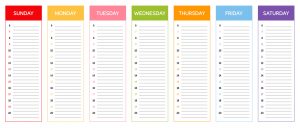
The more routines you have in place in your classroom and at home, the less time you have to spend planning. For example, maybe you always teacher grammar on Wednesdays or your students spend every Friday brushing up on their math facts. At home, you can plan to eat pizza every Friday or tacos every Tuesday and be sure to always have the ingredients on hand (or a delivery app on your phone) ready to go.
Stop Reinventing the Wheel
While it’s true that every group of students has different needs, that doesn’t mean that you need to write an entirely new curriculum every year. If you have lessons that have consistently worked well, keep using them rather than trying to come up with something fun and new. And remember that you don’t have to have an exciting, fun lesson every day. In fact, spacing out the exciting lessons and filling the time in between with practice opportunities and reinforcement can help improve student retention.
Additionally, don’t feel like you have to create everything yourself. Did you see the perfect rubric or slideshow presentation online? Use it. If you find the perfect resource on TeachersPayTeachers, buy it. You don’t have to feel bad because you didn’t create it yourself. Sites like HelpTeaching.com exist to help teachers save time by providing worksheets, video lessons, and other activities for their classrooms.
Get Digital Assistance
In today’s digital world there are tons of resources designed to save teachers time. You can keep up with an entire class of parents at once by using a service like Remind or quickly log behavior issues (positive and negative) with Class Dojo. There are also numerous Word, Excel, and Google templates designed to make record-keeping easier.
If you teach online for a service like VIPKid or have to keep detailed notes about your students and their performance, consider signing up for a service like Feedback Panda. Their templates make it easy to record student progress, write detailed course notes, and quickly review critical information about students.

Pay Attention to When and What You Grade
How many times have you brought a bag of papers home to grade only to take it back the next day with the papers ungraded? Even when teachers don’t look at the work they bring home, they spend a lot of time thinking about it. If you’re feeling stressed or have other things to get done, just leave the work at school. Then you don’t have to spend time worrying that you should be grading them because it’s not an option. Additionally, try to set due dates for larger assignments at times when you know you’ll be able to get the grading done and don’t be afraid to extend a due date if your week is filling up. Your students likely won’t complain about the extra time to get the work done.
Along with looking at when you grade, think about what you grade. Do you really need to grade every paper? If the students’ quality of work wasn’t up to par, consider chucking the assignment and trying again. If something was just for practice or participation, slap a check mark on it and hand it back, only adding comments if there are serious issues. If you give a writing assignment, rather than marking every error, provide more general feedback at the end. You can also look for ways to give students feedback on their work in class rather than offering a formal grade or implement peer grading for assignments that carry a lower weight.
Learn to Say No
It’s definitely easier said than done, but knowing your limits and learning how to say no can help you free up time in your schedule. Does a parent want you to tutor a student after school? Maybe you can suggest some resources for the student to review at home instead. Does your principal need someone to chair another committee? Maybe you can suggest a colleague who’d be better suited for the job. Do your kids want you to cart them around to activity after activity? Maybe you can have them choose one activity every 6 weeks or ask their friends’ parents to help carpool so you don’t have to be responsible for drop off and pick up every time.
Take Care of Yourself 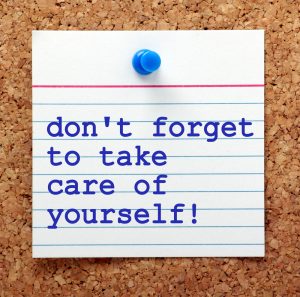
Even though self-care takes time, taking time to take care of yourself can actually add more time to your schedule. When you are tired and stressed, you work at a slower pace and likely don’t think as clearly. Taking a few hours every week to focus on relaxing and recharging can make it easier to get everything on your list done without feeling overwhelmed.
Embrace Imperfection
The problem with Instagram and Pinterest is they can make teachers feel like they have to have the perfect classroom, the perfect lesson, the perfect… everything. At the end of the day, your students and loved ones don’t care if you had a Pinterest-worthy lesson or the most Instagrammable classroom decor. They just want someone who loves and cares about them. So if you don’t have a classroom full of color-coordinated flexible seating, your walls aren’t covered with your professionally designed anchor charts, and you don’t have a Cricut-made t-shirt for every occasion, it’s okay.* That’s probably not what your students will remember anyway.
*And if you can maintain that Pinterest-worthy classroom, have a Cricut-made t-shirt for every occasion, or create anchor charts that show amazing graphic design skill, there’s nothing wrong with that either as long as it doesn’t come at the expense of taking care of you.
Announcing the 2020 HelpTeaching.com Scholarship Finalists
- 6 July //
- Posted in Announcements //
- Tags : scholarship
- Comments Off on Announcing the 2020 HelpTeaching.com Scholarship Finalists


Every year, Help Teaching holds a scholarship competition for aspiring writers. High school and college students submit their best short stories and informational texts for kids in the hopes of winning a $1,000 prize.
This year, our team read through nearly 800 scholarship entries, many of which were amazing works. This year, instead of choosing ten finalists and a few honorable mentions, we narrowed the pool down to 15 pieces. The following entries rose to the top and one was ultimately declared the winner.
Congratulations to all of the finalists and the 2020 HelpTeaching.com Scholarship winner.
#15 Fighting a Cupcake Intruder by Jeana Schafer
Jeana Schafer’s piece takes kids through the digestive process by describing what happens to a cupcake from the moment it begins to enter the mouth. Through this piece, kids can learn more about what happens to the food they eat. Jeana is a 2020 graduate who plans to attend UC-Davis.
#14 Mae Jemison: Female Astronaut by Maya Sousa

Mae Jemison was the first African-American astronaut. This piece by Maya Sousa, a student at the University of Colorado – Denver, describes her life and her impact on the space community.
#13 A Message from Mr. Rogers by Justin Hui
Mr. Rogers was known for his kindness and willingness to have difficult conversations in a way that kids could understand. This piece by Justin Hui, a recent graduate who plans to attend the University of Pittsburgh, shares a bit about how Mr. Rogers got his message across.
#12 Choose Your Own Adventure: The Life of a Plastic Water Bottle by Jennifer Xu
Jennifer Xu, a member of the Carlmont High School Class of 2021, wrote a piece that shows kids the importance of recycling. As they read, kids can pick what they want to do with a plastic water bottle and find out what happens as a result of the choice they make.
#11 Modern Treasure Hunt by Drew Cribbs
Have you ever been geocaching? Drew Cribbs, a graduate of Morgan County High School who plans to attend the University of Georgia, introduces kids to a way to enjoy a modern treasure hunt. The piece offers an overview of geocaching to help interest kids in the activity.
#10 The Mysterious Unicorn by Katelyn Shultz
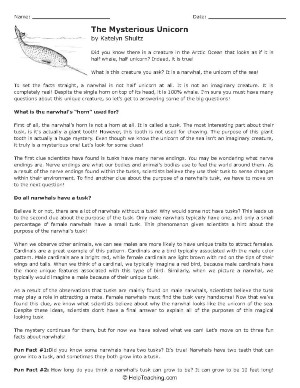
Narwhals are often thought of as mythical creatures, but they’re actually real. In her informational piece, Katelyn Shultz, a student at UNCW’s Watson College of Education, shares some fun facts about this unique creature.
#9 The Adventures of Ottie-O by Julie McCullough
Julie McCullough, a student at WGU, put her special education knowledge to work and wrote a story about an otter who struggles with loud noises. This is a great story to help students with autism or other sensory issues and can also be shared with other kids to help them understand their peers.
#8 The Lucky Color by Yen Nhi Ha
Red can symbolize many things, but in Asian cultures it is often a symbol of prosperity and good fortune. Yen Nhi Ha, a student at Jersey Village High School, shares the importance of this color in this short informational piece.
#7 A Special Leg by Arianna Turchetti

In this short story by Arianna Turchetti, a boy and his teacher have a very open conversation about what a prosthesis is. This story is a great way to introduce students to a topic that may be uncomfortable or unfamiliar to them. Arianna is a graduate of Enochs High School and plans to attend the Georgia Institute of Technology.
#6 A Round of Applause for the Costume Shop by Mariah Bowers
Mariah Bowers, a student at the University of Phoenix, takes students behind the scenes of the theater and introduces them to the costume shop. This short piece highlights some of the key positions in the costume shop, from the designer to the stitchers.
#5 Ruth Wakefield: History’s Smartest Cookie by Lena McEachern
Lena McEachern, a student at Carlsbad High School, shared the story of Ruth Wakefield, owner of the Toll House Inn and inventor of the infamous chocolate chip. Her story shows that sometimes not having the right ingredients on hand can lead to sweet surprises.
#4 Scared Speechless? by Keely Bayley
Many students struggle with public speaking, but Keely Bayley, a student at Fishers High School, gives them hope. This piece shares tips to help improve public speaking skills, beginning with the most important thing to remember when giving a speech: be prepared.
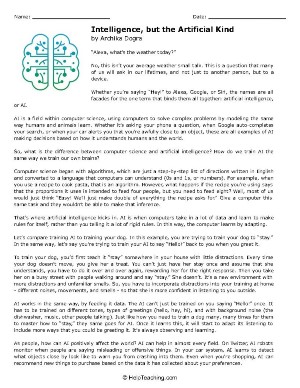
#3 Intelligence, but the Artificial Kind by Archika Dogra
How many people use voice recognition devices on a daily basis? This piece by Archika Dogra shares some information about these devices and explains how they differ from more conventional forms of computer science. Archika plans to attend Princeton University.
#2 A Job to Cuddle For by Katrina Chiong
One of our favorite pieces came in just before the deadline. Katrina Chiong, a student at Northside College Prepatory High School shared an informative piece about baby cuddlers. The piece explains the important role this hospital volunteers play in the lives of preemies.
#1 WINNER! Bessie’s Dream by Joanna Chong Jiaxuan
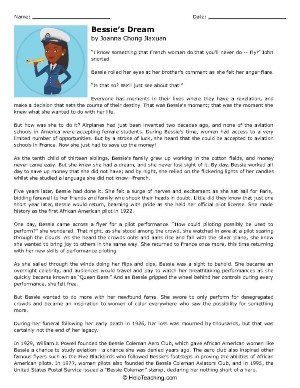
Bessie Coleman was one of the first African-American and female pilots in the world. This winning story from Joanna Chong Jiaxuan, a student at San Jose State University, describes how Bessie worked hard to reach her dream and the impact she had on the world.
If you know a high school or college student, encourage them to apply for the HelpTeaching.com scholarship next year. Entries are due June 1, 2021.
Don’t forget to read the stories from our previous finalists and winners: 2017, 2018, and 2019.
15 Ways to Emoji-fy Your Teaching
- 3 July //
- Posted in For Parents, Teaching Resources //
- Tags : teaching tips
- Comments Off on 15 Ways to Emoji-fy Your Teaching

Emojis have taken the Internet by storm. While their overuse may make you cringe, they’re a big part of the language your students speak. We say, “If you can’t beat ’em, join ’em!” By embracing emojis and making them a part of your teaching, you can start to speak your students’ language and make your classroom a little more fun.
Reading and Writing with Emojis
Rebus Stories
Rebus stories are texts where key words and phrases are replaced with images. Create your own rebus stories using emojis to represent some of the words or have students create their own rebus stories using emojis. As students read through the stories they can build their vocabulary and comprehension skills as they decode what each emoji means. Here’s a cute rebus story for you to use as an example.
Emoji Prompts
Instead of giving students a traditional writing prompt, give them a prompt written entirely in emojis. If you’re overwhelmed by the thought of putting emojis together, websites such as the Random Emoji Generator will provide random prompts for you. We’ve also created a short emoji prompts worksheet you can use as a fun activity with students.
Translating Texts
Can you imagine what Shakespeare would look like written in emojis? Test students’ understanding of texts in creative ways by having them translate key scenes or quotes from novels into emoji-filled sentences. The idea isn’t as crazy as it sounds. In fact, a group of writers already translated Moby Dick into emojis, but we bet your students can do it better.
Translating Emojis
You can also turn the tables and translate some of your students’ messages and comments using emojis into plain English. This will help your students see how they can use different forms of words and other styles of communication to convey a similar message. It also serves as a great lesson on the difference between formal and informal language.
Annotating Texts
When students read a text, you encourage them to annotate the text by highlighting and writing notes in the margins. When students read texts on the computer or tablet, why not have them annotate with emojis? These little faces and other images can help students quickly note their feelings on different sections of the text and give them a simple way to locate important points later on.
Four Pictures
A popular game shows players four pictures and has them guess the word all of the pictures have in common. Use emojis to create a similar game using your students’ vocabulary words. For example, a snowman, snowflake, Christmas tree, and set of skis may be used for the word “winter” or a trophy, sunglasses smiley face, star, and exclamation point may lead students to the word “stellar”.
Changing Language
The Common Core State Standards discuss how language changes over time. Talk with students about how emojis are part of a changing language. Hold a formal discussion where students share the pros and cons of emoji use and the effect they have on society or use this worksheet to get students to think about the changes on their own. You can also talk about changes to emojis and what emojis need to be added or taken away.
Math and Science with Emojis
Pictographs
Pictographs are graphs that use pictures to represent information. Instead of using traditional clip art or hand-drawn pictures, students can use emojis to create their own pictographs to represent data. Each emoji will represent a different unit.
Word Problems
Spice up traditional word problems by incorporating emojis. You can use emojis to replace key words and phrases, similar to how you would use them in a rebus story. Emojis can also represent numbers in problems. For example, if heart+heart=10, then how much does one heart represent?
Illustrating a Process
Few scientific videos are more entertaining than Bill Nye’s explanation of evolution using emojis. Like Bill Nye, your students can create their own videos or diagrams using emojis to illustrate different parts of a scientific processes. Or you can just incorporate Bill Nye’s series of emoji videos into your teaching.
GE Emoji Science
Another emoji resource to use in your teaching is GE Emoji Science. This Periodic Table ditches the chemical symbols in favor of emojis. Clicking on an emoji will open up an engaging explanation of a scientific concept for kids.

Emoji Puzzles
Emoji puzzles help build critical thinking and logic skills in students. To build an emoji puzzle, create a set of emojis related to a particular concept. This Can You Solve These Emoji Puzzles? video uses movie names and other pop culture references, but you can do the same for scientific principles, theories, or famous people and events in history.
Social and Emotional Learning with Emojis
Recognizing and Expressing Emotions
Emojis help kids learn how to recognize and express emotions. Have kids use their faces to recreate emojis or imagine what sound each emoji would make. Teachers who work with kids who struggle emotionally may also find that allowing them to express themselves through emotions rather than orally may help break down communication barriers.
Secret Codes
Some kids have trouble communicating with regular language, but they may not have as much trouble communicating with a secret code. Encourage kids to use emojis to write out messages, and then attempt to decode the messages they create.
Behavior Tracking
Emojis can be a simple way to track student behavior. Keep a chart of student names and regularly add emojis to log student behaviors throughout the day. Make these logs accessible to students so they can see how they’re doing. Encourage them to get all smiley faces or decrease the number of angry faces as they go throughout the day.
And when you need to get our your own emotions, don’t forget to check out We Are Teachers Emojis of Teaching to help you express yourself. You can also turn emojis into a history lesson by sharing The History of Emojis with students.
What are some of your favorite ways to use emojis in the classroom?
Ways to Bring Social and Emotional Learning into the Home and Classroom
- 1 June //
- Posted in For Parents, Teaching Resources //
- Tags :
- Comments Off on Ways to Bring Social and Emotional Learning into the Home and Classroom
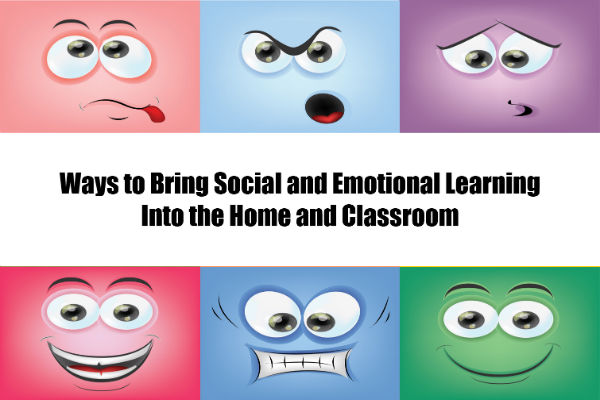 As social media becomes more prevalent, social norms change, and incidences of suicide, violence in schools, and drug use among teens increase, social and emotional learning (SEL) becomes more important. It’s not enough for students to know the basics of reading, math, science, and social studies. They must also be taught how to interact with others, manage emotions, and make responsible decisions.
As social media becomes more prevalent, social norms change, and incidences of suicide, violence in schools, and drug use among teens increase, social and emotional learning (SEL) becomes more important. It’s not enough for students to know the basics of reading, math, science, and social studies. They must also be taught how to interact with others, manage emotions, and make responsible decisions.
What is Social Emotional Learning?
According to the Collaborative for Academic, Social, and Emotional Learning (CASEL), there are five key dimensions of SEL:
- Self-Awareness
- Self-Management and Emotion Recognition
- Social Awareness
- Relationship and Social Skills
- Responsible Decision Making
Incorporating SEL at home and in the classroom doesn’t require a lot of special effort or isolated social emotional learning activities. Instead, it involves being intentional about asking questions and structuring activities in a way that gives children and teens a chance to practice building key skills.
Self-Awareness
Self-awareness involves helping students recognize their own thoughts and emotions, as well as building their awareness of what is expected during key tasks.
To build self-awareness, you can regularly ask students to share their thoughts and opinions on topics. At home, this may be talking to children and teens about how they’re feeling and encouraging them to consider “what if?” situations. In the classroom, you may try to bring in activities such as:
- Anticipation guides
- KWL charts
- Socratic seminars
- Journal prompts
- Reflective journals
In addition to helping children and teens become more aware of their thoughts and feelings, you can improve awareness by explaining how they should behave in a given situation.
For example, if you go out to dinner, you want a child to be more aware of the level of his/her voice and how to act in the situation. To improve that sense of awareness, you may need to point out models of positive behavior or mention positive things the child is doing. For example, “I noticed you’re using a quiet voice. Thank you for remembering to keep your voice down in the restaurant.”
Self-Management and Emotion Recognition
Of course, self-management and emotion recognition directly align with the concept of self-awareness. A child is more aware of his/her actions or emotions may be more likely to better manage those actions and emotions.
A few ways to help children and teens with self-management and emotion recognition include:
-
- providing positive reinforcement when a child or teen does something well
- noting what you observe (“I see you are feeling angry”)
- developing and following a schedule (created with input from the child/teen)
- breaking down large projects into smaller parts with milestones to meet
- discussing how to respond to scenarios that are likely to crop up
Goal-setting is also a key element of self-management and emotion recognition. You can encourage children and teens to set personal goals and academic goals. For example, a teen may set a personal goal to make the track team and an academic goal to get a 3.3 GPA. Children and teens can also set financial goals, such as saving up for a special toy or a big trip. Don’t just stop at the goal though. Take the learning further by actually developing a timeline, setting milestones, and regularly checking progress towards the goal.
Sometimes students won’t reach their goals or respond positively to situations. In those moments, you should be there to provide support and talk through the situation.
Social Awareness
Social awareness involves helping children and teens learn how to interact in various situations, as well as how to show empathy and respect for others. Students live in a diverse world and are likely to encounter new perspectives and different opinions every day.
At school, you can build social awareness by having students:
-
-
- work with those who have different interests, backgrounds, etc.
- read texts from a diverse group of authors
- study multiple perspectives on a topic
- participate in class discussions
- show respect by listening to others and valuing their opinions
- modeling how to handle difficult topics or situations
-
Parents and teachers should never underestimate the power of their own actions. Children and teens are watching to see how the adults in their lives respond to differing opinions, embrace diversity, and show empathy and respect to others. Your response to a trying situation may be a highly teachable moment.
Relationship Skills
Some children and teens can just go right up to a stranger and start talking. They have the ability to easily form relationships and interact with people. For others, it takes more effort. However, relationship skills goes beyond just being able to make friends. It’s also involves communicating with and listening to others, resisting peer pressure, negotiating conflict, and learning to ask for help.
At home and in the classroom, let children and teens it’s okay to come to you with a problem or to ask for help and respond positively when they do. You may have to remind them a few times or say, “If you want help with that, I’m here to help you.”
Some other ways to build relationship skills include:
-
-
- role playing conversations children and teens may have
- refusing to step in when they have a conflict with someone else (unless safety is an issue
- giving them plenty of opportunities to engage in back-and-forth conversation and modeling good listening skills
- holding debates in the classroom
- starting a peer mediation program
- letting children and teens negotiate with you
-
Responsible Decision-Making
As parents and teachers, it’s easy to want to make decisions for children and teens. However, to function as adults, they need to learn how to responsibly make decisions. Both at home and in the classroom, you can help promote by responsible decision-making by giving children and teens a chance to make choices. Choices can include:
-
-
- rules for the classroom or home
- the type of activity to complete
- what to have for dinner
- what sport or activity to join
-
Of course, they’re not always going to make the right decision. That’s why another key component of teaching responsible decision-making is providing a safe place for children and teens to fail and learn from their mistakes. If you berate or ridicule them when they make a mistake, they’ll be less likely to take a risk in the future or they’ll become so concerned with perfection that they’ll drive themselves crazy. Instead, respond to mistakes positively and provide support and guidance to help them grow.
Remember, it’s not just students with autism or learning disorders who need to build social and emotional skills. Even straight-A students or seemingly well-adjusted children can benefit from a little more help in this area.
Create Your Own Lessons
- 16 May //
- Posted in How To //
- Tags : teacher resources, teacher tips
- Comments Off on Create Your Own Lessons
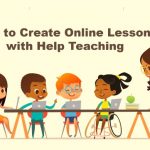
In addition to the online lessons already available on Help Teaching, Pro and Group Pro subscribers have the ability to create their own lessons and assign them to students using our online lesson creator.
Below we’ll share some tags you’ll need to help you get started as you create online lessons.
For general instructions on how to set up a lesson, you can watch our online tutorial.
Embedding a Video
To embed a video into the lesson, use the following video tag:
[video type=youtube]videoID[/video]In place of the video ID, insert the video’s YouTube id. You can find this in the video’s link: https://www.youtube.com/watch?v=H17QPo0kS6I
Adding Practice Questions
If you add practice questions to your lesson, you will see a “Practice Questions” button appear on your lesson. You can move this button by placing the practice button where you would like it to appear in the lesson.
[practice/]Adding Images
You may add images to the lesson from the Help Teaching library or from your uploaded images by simply clicking or tapping on the image you would like to add. This will automatically insert the image in your lesson.
If you would like to move the image, you can copy and paste the code where you would like the image to appear. Additionally, you can add float=left or float=right tags to your image to have it appear on the left or right hand side of the page.
Example: [img float=left]Baseball[/img]Text Formatting
If you would like to change the font, you can wrap the text in font tags.
Example: [font size=large]This is my text[/font]Our site supports the following font sizes:
- medium => 16px
- large => 20px
- xlarge => 30px
- xxlarge => 40px
- xxxlarge => 50px
- huge => 100px
- xhuge => 120px
- xxhuge => 140px
- xxxhuge => 160px
Additionally, you can bold or italicize the text by adding a special code to the font tag.
Example: [font size=large bold=yes italic=yes]hello, world![/font]Adding Tables
Our lessons also support the addition of tables. Be mindful of the lesson width when creating a table and limit the number of cells (columns) you add. If you add too many, your table will not show up properly on the screen.
To create a table, use the following:
Start with: [table format=advanced]
Then add a row tag: [row]
Add cell tags within the rows for columns: [cell][/cell]
Finish a row with an end tag: [/row]
Finish the table with an end tag: [/table]
You can also align content in cells with tags, such as the following:
[cell header=yes align=center valign=center][font size=medium]Fossil[/font][/cell]If you need more help creating or assigning online lessons, please reach out to our help desk.
Offline Ways to Help Kids Build Online Skills
- 20 April //
- Posted in For Parents, Teaching Resources //
- Tags : parent resources, teaching tips
- Comments Off on Offline Ways to Help Kids Build Online Skills
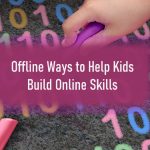
In a world that is increasingly reliant on technology, it feels like kids are always in front of screens. While you want them to learn how to thrive in a technologically-centered world, you also don’t want them to spend their entire lives online. Thankfully, there’s good news. Many of the critical thinking and communication skills kids need to thrive online can also be developed offline. So get kids to put down the screens and do some offline learning that will help them next time they log back on.
Practice Typing
Muscle memory is a big part of being able to type well. It’s similar to playing an instrument like the guitar or piano. Your fingers learn where to go.
Print or draw a copy of a keyboard and practice moving your fingers to type the same set of words over and over again.
Make a Maze
Create a maze and write steps to help someone get through it.
One way is to create a LEGO maze and write instructions to get through it using the fewest commands possible.
Give Instructions
Similar to a maze, work on communication skills by having kids give someone else instructions on how to do something. Make a LEGO figure, draw the same picture, make a peanut butter and jelly sandwich, etc.
Play a Guessing Game
Come up with a number and see how quickly kids can guess it. Play 20 questions and have them use yes/no questions to try to figure out what you’re thinking of (easier if it’s a specific topic, like Pokemon characters). If you want to take the activity further, talk about the decisions that were made in the process.
Find Multiple Ways to Complete a Task
For example, ask kids to fold a sheet of paper to create 16 equal rectangles. Then ask them to find another way to do the same thing. Can they come up with three ways? Four ways?
Play If, Then Simon Says
Take Simon Says to the next level by turning it into an If, Then game. Don’t think this is just for little kids. If you throw in some tricky if, then statements it can be challenging even for older kids. Even high school students enjoy a good game of Simon Says as a brain break every now and then.
Create a Visual Sequence
Take a story kids have read or an experience they’ve had and turn it into a visual sequence using only arrows and singular images to describe what happened.
Make a Binary Alphabet Creation
Using the binary alphabet, have kids make a bracelet, a LEGO sequence, or a code on graph paper (coloring in the squares a different color for each number) to write a message in binary. Then see if you can guess what it says.
Have Fun with Emojis
Draw pictures of emojis to tell a story. Play emoji Pictionary. Make faces that mimic emojis and try to guess what emoji each person is trying to make. Find more educational uses for emojis with 15 Ways to Emoji-fy Your Teaching.
Solve Riddles and Logic Puzzles
Ask kids riddles and see if they can answer them or print off some logic grid puzzles or logic challenges for kids to solve.
Some fun riddles and puzzles you can find on HelpTeaching include:
- Who’s Who? Preschool Riddle Puzzle
- Elementary Logic Puzzles
- Definitions Word Puzzles
- Synonyms Word Puzzles
- Rebus Word Puzzles
For more great ideas, CS Unplugged offers lesson plans and resources to help kids learn computer science skills online. If you have a Minecraft fan at home, you might also enjoy 10 Offline Ways to Bring Minecraft into the Classroom.
What favorite games or activities do you have to help kids learn tech skills offline?
Benefits of Music and Movement to Children’s Development
- 13 April //
- Posted in For Parents, Teaching Resources //
- Tags : parent resources, parenting, teaching tips
- Comments Off on Benefits of Music and Movement to Children’s Development

Disclaimer: This post contains affiliate links, but all reviews and opinions are our own.
Dancing along to a song or singing a tune sounds like a simple activity to pass the time, but for children, it’s so much more. Numerous research studies have found that music is a major contributor to children’s growth and development. Combined with movement, music accelerates the development of cognitive, physical, emotional and social skills that can prepare a child for the big world.
Let’s take a look at the positive effects of song and dance to the development of children and how you can help your child reap these benefits.
Moving and Singing
Music has the ability to get us moving and it can also put us in the mood to simply sit back and relax. Play a happy, upbeat tune and you can see little children bouncing along to it. Turn the volume down and choose a soothing classical piece and you’ll find babies falling asleep without a fuss. Such is the effect of music on human behavior, and this is something you can use to help your child develop.
Moving along to music improves coordination among different body parts, allowing your child to develop motor skills. They learn to control movement, develop different muscle groups and get a good exercise. Dancing is great for muscle development, balance and strength. When children dance in a group, they also develop spatial awareness, allowing them to become less clumsy while paying more attention to others in the same space.
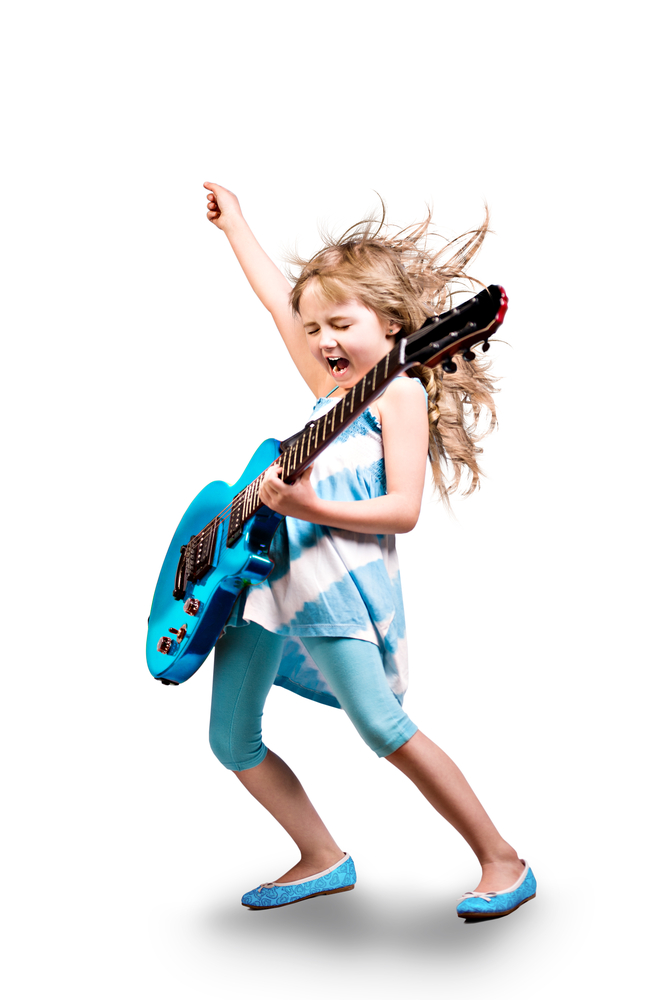
Young children with good gross motor skills are also able to hone their fine motor skills more quickly. This helps them when learning how to write and play a musical instrument such as an acoustic guitar, ukulele or a piano.
Singing, while not often seen as a strenuous physical activity, is actually a good aerobic exercise as well. Singing and dancing are aerobic exercises that improve the efficiency of the body’s cardiovascular system. They increase the amount of oxygen in the blood and make you alert, and trigger the release of hormones that are linked to feelings of happiness.
Soothing babies by singing lullabies and nursery rhymes is also a good way to develop emotional regulation in children.
Musical Activities at Home
Making song and dance a part of the everyday life at home is probably the best way to reap the benefits early on. Here are some fantastic ideas to make music and movement a family affair.
- Let your child play with toys that make sounds. We’re not just talking about toy instruments such as rattles and xylophones for babies. Even a simple wooden spoon can make a sound when hit against a bowl, so let your child experiment and discover the different sounds they can make using a variety of objects.
- Sing together. It really doesn’t matter if you think you sound like a goat – what matters is you for a bond with your child as they learn how to sing along! Start with popular nursery rhymes (such as “Twinkle, Twinkle” and “Baa, Baa, Black Sheep”), the birthday song, the alphabet song, and other fun songs for children.
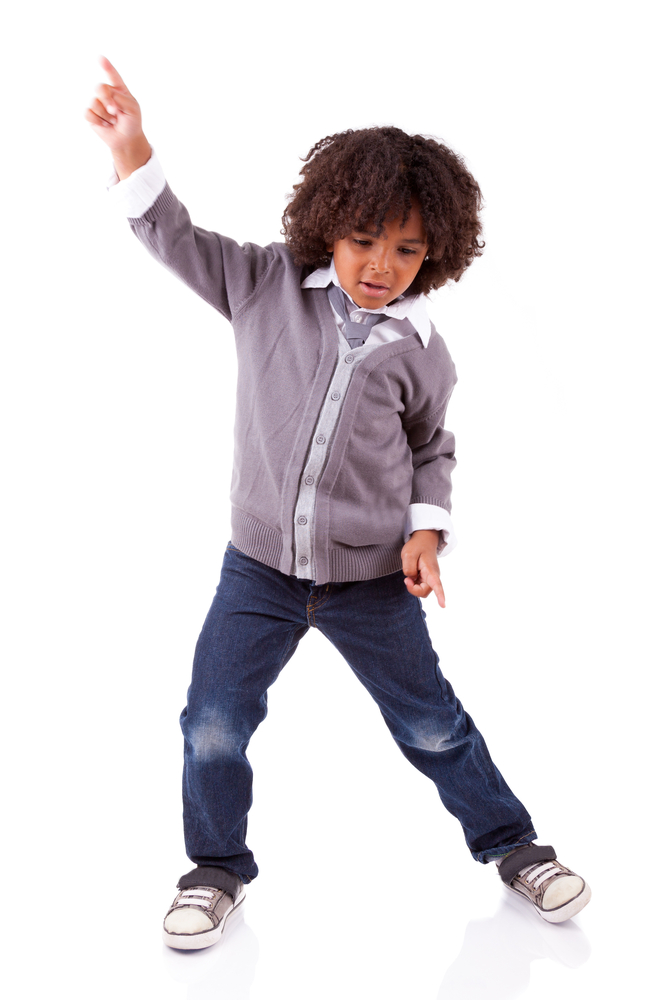
- Incorporate music into your child’s everyday routine. Make up a wakeup time song, a snacktime song, a bathtime rhyme, a lunch ditty, a bedtime song, a pick-up-your-toys-time song and what have you. It makes these activities more enjoyable for little children too.
- Get dancing, get bonding. Encourage your child to move along to music by doing some dancing yourself. Infants and toddlers make simple movements that are fine-tuned as they grow. Dance with your child and you’ll be doing it until they have dancing children of their own!
What’s your experience with music and raising your kids? Tell us your story! If you’re looking to help kids learn piano, check out Skoove, a program which offers online interactive lessons and tutorials and resources to help people of all ages learn to play.
Coronavirus School Closing: 17 Free Online Teacher Resources
- 13 March //
- Posted in Teaching Resources //
- Tags : teaching resources
- Comments Off on Coronavirus School Closing: 17 Free Online Teacher Resources


Teachers around the U.S. are scrambling to come up with lesson plans and resources for students as many school districts are making the decision to shutter schools for the next two to three weeks (or even more) to help slow the spread of COVID-19, the disease caused by the novel coronavirus, which has been declared a global pandemic.





